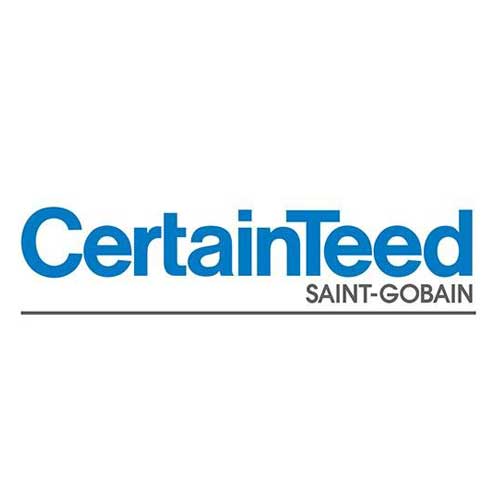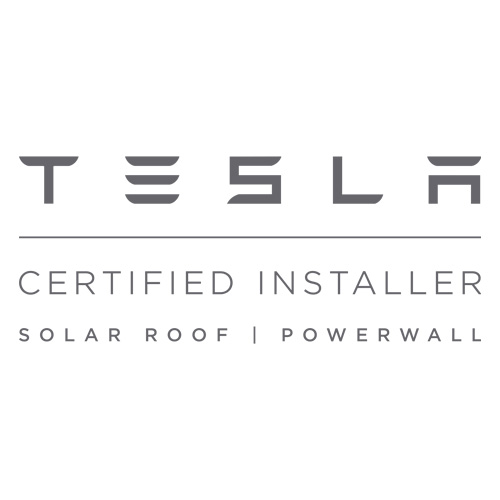What Type Of Roof Is Best For Solar Panels?
When it comes to installing solar panels, a common dilemma that many homeowners face is what type of roof works best for them. The type of roof you choose can make a big difference in the efficiency and lifespan of your solar panel system.
Knowing what kind of roof is best suited for solar panels can help you make an informed decision when considering installing them.
Metal roofs are one of the most popular options for those looking to install solar panel systems on their homes. Metal roofs are durable, long-lasting and they provide excellent protection against the elements. In addition, they have high reflectivity which helps keep your home cooler in warmer months and lower electricity bills throughout the year.
Furthermore, metal roofs are lightweight and easy to install compared to other types of roofs and require minimal maintenance once installed. They also create an aesthetically pleasing look that complements many different styles of homes.
Another great option for those looking to install solar panels is a flat or low-pitch asphalt shingle roof. Composite Asphalt shingle roof offer a variety of benefits including good weather resistance, affordability, and easy installation compared to other types of roofs.
Asphalt shingles also provide excellent protection from UV damage which can affect solar panels over time if not properly shielded from direct sunlight exposure.
Additionally, low-pitch asphalt roof provide plenty of surface area for mounting multiple solar panels without any additional structural support needed – making them ideal for those who want maximum energy production potential with minimal installation costs and effort involved.
Tile roofs are another popular choice when it comes to installing solar panel systems on residential homes. Tile roofs offer both aesthetic appeal as well as durability due to their long lasting nature and fire retardant properties that make them desirable in some areas where wildfires are common.
When it comes to mounting the panels onto this type of roof there’s no need for additional structural support since tiles are strong enough to easily hold the weight with minimal reinforcement required – making installation very simple in comparison with other types of roofs such as slate or wood shakes that require more intensive bracing techniques before they can safely host photovoltaic cells.
Different Types Of Roofs For Solar Panels
The most popular types of roofs used for solar panel installations are either asphalt shingle or metal roofs. There are pros and cons associated with each type, so let’s take a look at each separately.
Asphalt Shingle Roofs
Asphalt shingle roofs are made from asphalt-saturated paper or fiberglass matting covered with an adhesive-backed mineral coating that provides a waterproof barrier against precipitation, wind and UV damage.
Asphalt shingles have been around since the 1920s and have become popular due to their durability, low maintenance requirements and relatively low cost. As long as they are installed correctly and maintained regularly, asphalt shingle roofs will last 20 years or longer with minimal repairs needed over time.
In addition, many homeowners prefer its aesthetics because of its classic look.
The downside is that these roofs do not provide much insulation from heat or cold temperatures in comparison to metal roofs; therefore, your energy bills may be higher than if you installed a metal roof instead.
Additionally, since asphalt shingles cannot withstand extreme weather conditions such as hail storms or high winds, they may need replacement more often than other types of material used in construction.
Metal Roofs
Metal roofs are becoming more popular due to their longevity and energy efficiency compared to other types of roof material for solar panels such as asphalt shingles. A metal roofing can last 40-50 years without needing any major repairs when properly maintained over its lifespan; however, it does come with a higher upfront cost than other types of roofs like asphalt shingle roofs.
On top of being more expensive initially than asphalt shingles, metal roof systems require specialized tools and skills during solar installation so it’s important to choose an experienced contractor who knows how to properly install them in order for them to last long-term without major problems arising in the future.
In terms of energy efficiency benefits compared to other types of materials like asphalt shingles or even wood shakes or tiles; metal roofs have reflectivity rating between 65%-90%, meaning they are able to deflect up to 90% of incoming sunlight away from your home while still allowing some light into your house depending on the color chosen (darker colors absorb less heat but allow less light through).
This allows your home stay cooler in hot climates while reducing cooling costs by keeping temperatures inside at comfortable levels during summer months making it ideal for those who live in warm climates where temperatures tend stay very high all year round; however this advantage does not apply if you live somewhere with colder climate since these kinds roofs don’t insulate well against cold air (but still offer better insulation than traditional asphalt shingle rooftops).
Finally metal rooftops also offer superior protection against strong winds & heavy rain/hail storms since they won’t get damaged easily under these conditions making them an ideal choice if you live area prone to these kinds of natural disasters & want to protect house from potential damage caused by them both on a short-term & long term basis alike.
1. Metal Roofs Are The Best Type Of Roof For Solar Panels
These advantages make metal roofs ideal for supporting heavy solar installations without sacrificing performance or durability over time.
Solar panel installers appreciate how easily metal roofs can be adapted to accommodate various configurations of solar panels and mounting brackets with minimal disruption or damage to the existing structure; this makes them a top choice for many commercial applications such as office buildings and warehouses that require large amounts of electricity but may not have access to a grid-tied system.
Metal roofs are also highly resistant to weather-induced wear and tear, making them an ideal choice for homeowners living in climates with high winds, rain or snowfall as these conditions can cause significant damage over time on other best roof material if they aren’t properly secured or maintained regularly.
Some manufacturers offer warranties on their metal roof space products that cover hail damage up to two inches in size!
2. Metal Roofs Reflect Heat, Which Can Help Keep Your Home Cooler In The Summer
Metal roofs are also designed with longevity in mind due to their durable construction that resists rust and corrosion while being highly resistant to extreme weather conditions such as strong winds, hail, snowfall and more.
Properly installed metal roofs by solar installers can last up to 50 years or longer depending on how well they are maintained over time. This makes them one of the most cost-effective solutions available since they require less maintenance than other types of roofing materials over their extended lifespan.
The effectiveness of a metal roof in keeping your home cool in the summer depends on several factors, including its color, design, and installation. Metal roofs come in a variety of colors that range from light beige to dark gray and even blue or green.
Selecting a lighter color will help reflect more sunlight away from your house, while darker colors absorb more heat. Standing seam metal roofs – which feature raised seams between panels – can also be selected for maximum reflectivity.
3. Metal Roofs Are Environmentally Friendly
When it comes to choosing a roof, solar panels are a big consideration. Not only do they help to reduce our carbon footprints, but they can also save you money in the long run. However, not all roofs are created equal when it comes to solar panels.
While tile roofs may be cheaper in the short-term, they can be expensive and difficult to maintain over time. Solar systems on shingle roofs can be a fire hazard, and metal roofs are the most environmentally friendly option overall.
That said, there are still some good options for roofing if you’re looking for solar panels. For example, metal roofs are both affordable and environmentally friendly. Thatched roofs aren’t great for solar panels due to their low efficiency, but they’re an affordable option if you don’t want or need solar panels.
Flat roofs may not be ideal for installing solar panels due to their lack of insulation and limited space, but they’re an efficient choice if that’s what you’re looking for. So whatever type of roof you choose – make sure it’s compatible with solar panels!
Metal Roofs Are The Best Type For Solar Panels
If you’re looking to install solar panels on your home, a metal roof is the best option. Not only are they corrosion resistant, but they are also durable and long lasting. In fact, metal roofs can last up to 50 years without needing any repairs or replacements. They are also fire resistant and will help keep your home cooler in the summertime. Plus, they are reflective which will help to reduce energy costs by keeping your home cool in the evening and during the day.
As for solar panels, a metal roof is great because it is a good absorber of sunlight. This means that more sunlight will reach your solar panels which will increase their ability to generate energy.
Additionally, metal roofs are environmentally friendly because they don’t require any sealant or paint to protect them from the elements. In addition, they don’t produce any noise which can be disruptive when solar panels are installed on top of them.
So if you’re looking for a durable and long lasting roof that’s perfect for solar panels – choose a metal roof!
4. Metal Roofs Are An Excellent Choice For Homeowners In Hawaii Who Are Looking To Install Solar Panels.
Are you looking to install solar panels on your home? If so, you may be wondering what type of roof is best for the job. Solar panels are a great way to generate renewable energy, but they need a place to hang. That’s where metal roofs come in – they’re an excellent choice for homeowners in Hawaii who are looking to install solar panels.
solar panel installation on any type of roof. Solar panels are most commonly installed on asphalt shingle roofs, but they can also be installed on tile roofs and flat roofs. Metal roofs are an excellent choice for solar panel installation because they are durable and long lasting. Not only that, but metal roofs can help reduce your electric bill by generating renewable energy. In fact, research shows that metal roofs can actually generate more electricity than traditional asphalt shingle roofs!
One other benefit of installing solar panels on a metal roof is that it can increase the value of your home. Many people view homes with solar panels as being more valuable than those without them, and this is largely due to the increasing popularity of green building practices. By installing solar panels on your home, you’re helping to make sure that your house is environmentally friendly – and this will definitely have a positive impact on its value!
Choosing The Right Roof For Solar Panels
When it comes to choosing the right roof for solar panels, there are a few things that you need to take into account. First and foremost, make sure that the type of roof is compatible with the solar panels that you’re looking to install. Next, consider the weather conditions in your area – composition roofs are usually good for solar panel installations because they have a high thermal mass and can handle heavy rain and snowfall.
Once you’ve determined the type of roof that’s best for your solar panels, there are a variety of other factors to consider. For example, most types of standing seams roof is compatible with solar panels, but extra care must be taken when installing them so as not to damage the shingles. Flat concrete or clay tile roofs are also great options for mounting solar panels because they’re durable and easy to clean. Finally, metal roofs generally don’t work well for installing solar panels because they don’t typically have a high thermal mass and can be difficult to heat up in cold weather.









